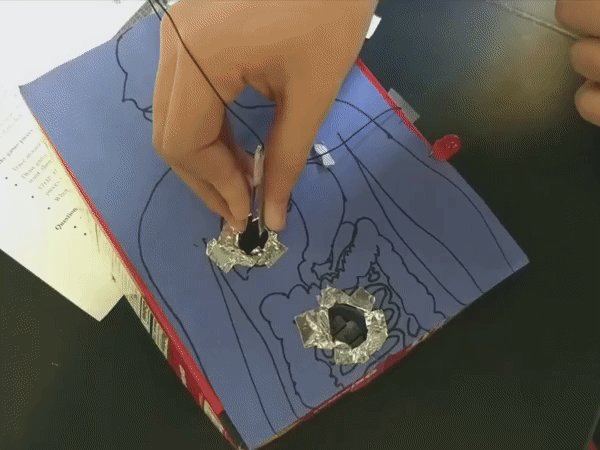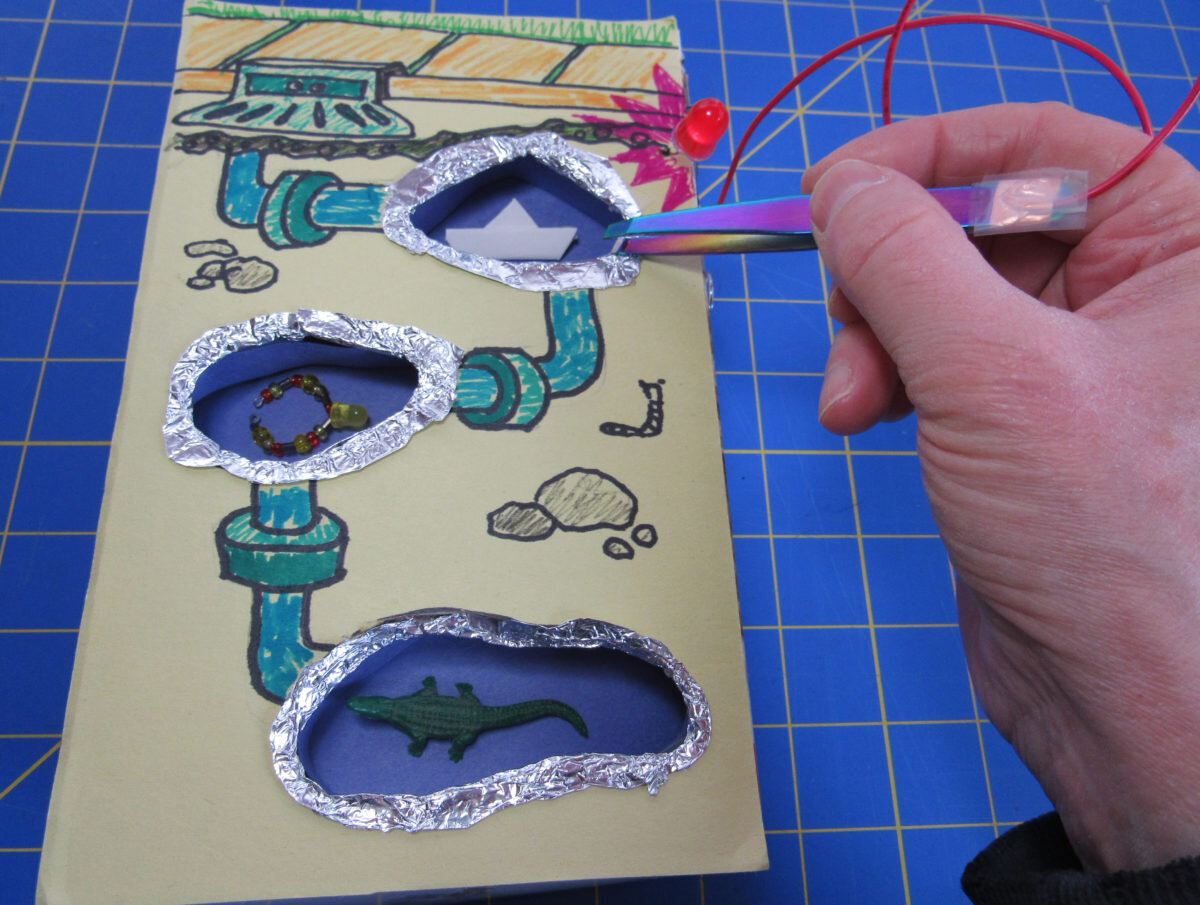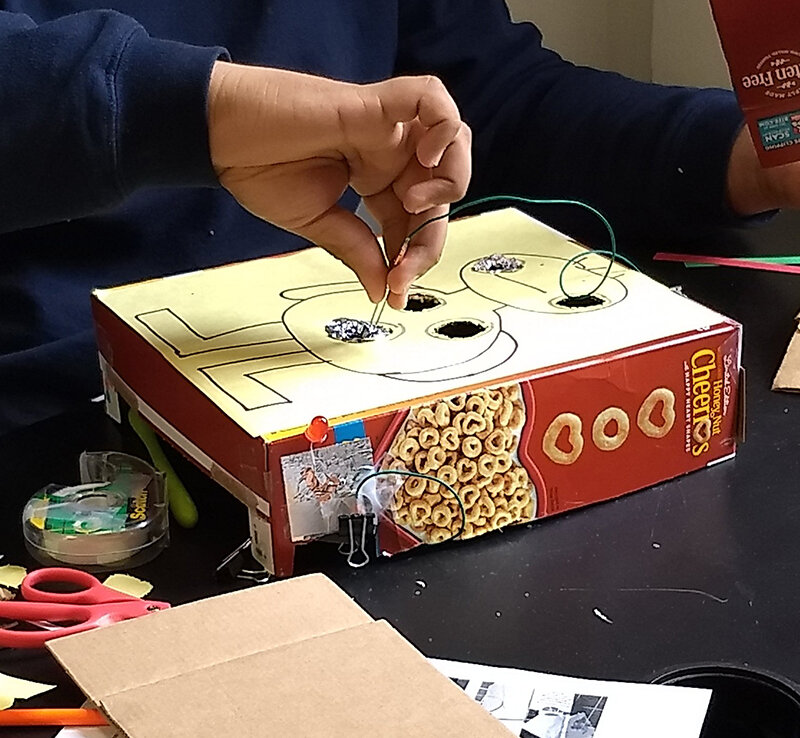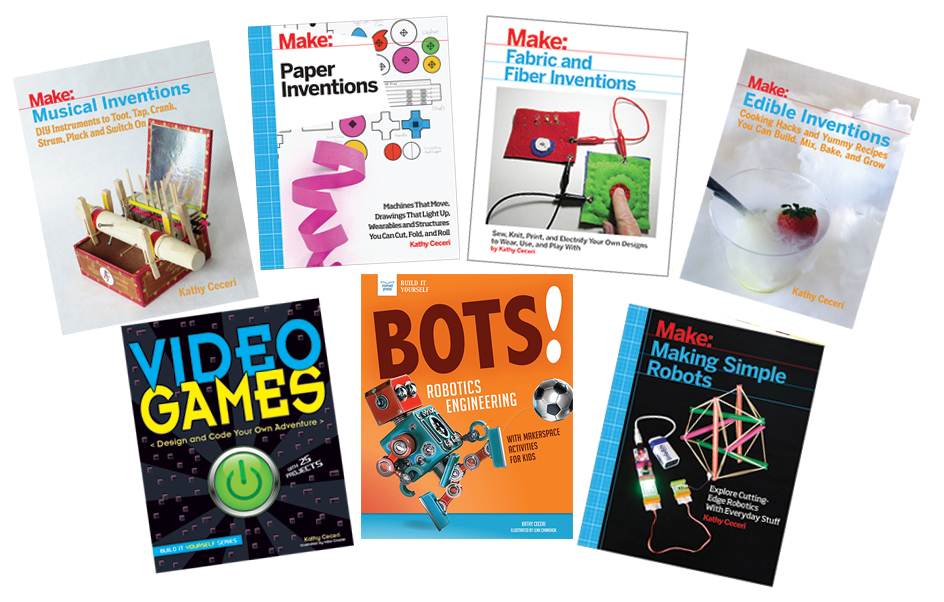Make a Buzzing Operation Game!
Click the photos above to enlarge.
Make a personalized version of the board game Operation, where players must remove game pieces without setting off the alarm! You choose the theme, design the board, and build the electric circuit that makes it work. All you need to create your buzzing, light-up game is a recycled box (cereal or cracker boxes work great) and some simple components. Turn your board into a treasure map, an adventure story, or a test of skill — whatever sparks your imagination!
Check my Workshops schedule for upcoming dates, or go to my Programs page to book a workshop for your school, library, or youth group!
Supplies
To work along with the online workshop, have these materials ready:
Electronics and Special Supplies:
Note: If you have a kit, it contains all the electronics and special supplies.
mini vibrating disc motor with ends stripped
insulated wire, about one foot long, with the ends stripped
3 volt coin battery (such as CR2032)
metal tweezers (look in the dollar store, or in a pinch, make your own by bending a thin strip of cardboard in half and cover with foil)
small binder clip
optional: conductive copper foil tape or aluminum foil tape (found with heating duct supplies)
Need last-minute supplies? LEDs can be salvaged from tea lights, light strands, or old toys or devices. You may be able to find a small vibrating motor in an old disposable toothbrush or pager. See my Dollar Store Electronics video for instructions!
To strip a wire: Use a wire stripper tool like this to cut through the plastic insulation, no more than 1/2 inch from the end, and pull it off the metal wire inside. If you don’t have the tool, carefully pinch all the way around the insulation with regular scissors or small nail clippers. Bend the wire back and forth until the insulation separates and you can slide it off the end.
Crafts supplies and recycled materials:
thin, smooth-sided cardboard box (such as a small or medium-sized cereal or cracker box)
1 piece of aluminum foil big enough to cover the inside of the box game board, plus a smaller piece for the outside circuit (regular kitchen foil is fine)
heavy paper, such as construction paper or cardstock:
one piece to cover the top of the box (for your game board)
one or two long strips, about 1/2 inch wide, to make the holes for the game pieces (this may come with your kit)
Optional: one piece to cover the back of the box (for the bottom of the holes)
tape (any kind of non-conductive tape, such as clear or masking tape)
optional: double-sided tape or a glue stick
markers or other drawing tools
something to make or use as game pieces: scrap cardboard, styrofoam plate or tray, clay, beads, buttons, etc
Shopping for a group?
See my Amazon shopping list with links to items in bulk. See the notes on each item for the amount needed for each person, and how to prep the materials. (I may earn a commission from Amazon, at no cost to you.)
Can you find the LED, the buzzer, the battery, and the wire that closes the circuit? (Click to enlarge the image.)
How it Works
Electricity from a battery will flow around a circuit made of conductive material like metal.
To run, the circuit must be closed (connected in a loop).
The components (light and buzzer) connect the inside and outside pieces of foil.
The Original Operation Game!
The inventor of the original Operation game was John Spinello. He got the idea from a childhood memory of sticking a safety-pin into a light socket. He turned it into a game for a class project in college in 1963. Read more about him here.
Warning: Do not play around with electricity — except for your small battery-powered circuits like your game board!
Looking for More Great STEAM Projects?
Find more free activities you can do at home on my Projects page






